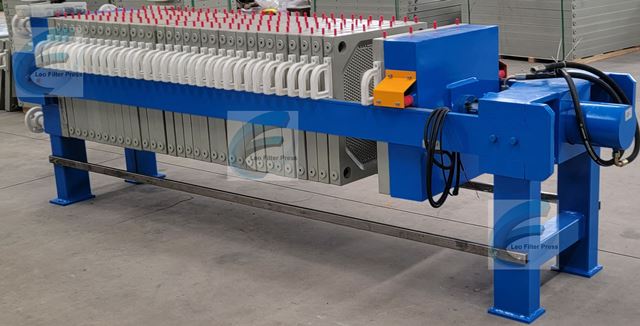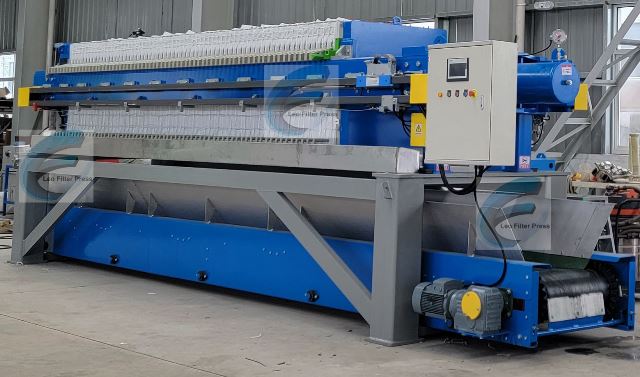Leo company's product prototype.

Plate and Frame Filter Press Designed Under Plate and Frame Filter Press Principle for Working
Inquire or Request this information, Please E_mail: yankeeyang@vip.126.com
High filtration efficiency for fine particles
Ability to handle high solids content
Flexible for different materials (adjustable plate-frame arrangement)
Can include washing/drying stages
Plate and Frame Filter Press Disadvantages:
Batch operation (not continuous)
Labor-intensive for filter cake removal
High maintenance (filter cloth replacement)
Plate and Frame Filter Press Variations:
Recessed Plate Filter Press: Uses recessed filter plates instead of separate filter frames, reducing parts.
Membrane Plate Filter Press: Includes inflatable membranes for improved filter cake drying.
Plate and Frame Filter Press Working Principle
1. Filter Press Filter Plate Pack Assembly: filter Plates and filter frames are alternately arranged with filter cloth between them.
2. Filter Press Closing: The filter press plate stack is compressed using a hydraulic or manual mechanism.
3. Filtration: Slurry is pumped into the chambers; solids are trapped, forming a filter cake, while liquid passes through the cloth and discharge as filtrate.
4. Filter Cake Washing (Optional):If needed, wash water is introduced to remove impurities from the cake.
5. Filter Cake Drying (Optional): Air may be inlet through to reduce filter cake moisture content.
6. Filter Cake Discharge:The plate and frame filter press is opened, and the filter cake is removed.
Plate and Frame Filter Press Applications:
Chemical Industry: Separation of precipitates, catalysts, and pigments.
Pharmaceuticals:Purification of active ingredients.
Food & Beverage: Clarification of juices, oils, and beer.
Mining & Metallurgy:Dewatering of mineral concentrates.
Wastewater Treatment:Sludge dewatering.

 FilterPress.cc
FilterPress.cc Guestbook
Guestbook